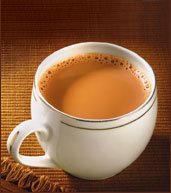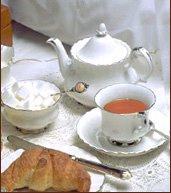Tea growing regions of India, Assam has acclaimed its name as the largest production and cultivation house all over the world. This is due to presence of long seasons with favorable growing conditions. Of course, Assam leaf has been a success since a long time. The leaves are often plucked from the plants of camellia sinesis which produces quality black leaf. When a person is about to gather information about the Assam leaf and its types, most of the research will be confined to the malty flavor and bright color of the black tea which is also called popularly as the Breakfast Tea.
Very much close to the borders of Bangladesh and Burma, on the coasts of Brahmaputra river, Assam tea is grown in plenty with organic cultivation which wins trust and credibility of millions of consumers in the entire world.
Harvesting seasons for Assam Tea
• First Flush – Among the two harvesting seasons, the first flush comes first in which late March is the best time to pluck out tea leaves.
• Second Flush – This one is regarded as more sweetened and natural version of the Assam variety, also called as ‘tippy tea’, known for its prized and full body texture. Of course, the texture, flavor, color and aroma of the second flush harvest is quite superior than the first one and even to the Chinese bush.
Famous types of Assam tea
• Black tea – As discussed earlier, this produce has been often termed as the Breakfast Tea and is characterized for its tart, full body texture, beautiful but natural aroma and vigorous body structure. It has long been used as Irish, English and Scottish breakfast tea.
• Green Tea – Although smaller section of tea production is also accounted for the green tea in Assam, it is often known for its taste and distinct flavor & aroma. Here, you will be surprised with the notations and characteristics of local green tea where natural color and brightness of leaves are preserved in the production process.
• Organic tea production – As per the safety standards of cultivation the plants are closely regulated and inspected on scheduled basis so that massive amount of produce is obtained, with rich taste and realistic aroma. You will never find here the use of chemical pesticides, fertilizers and any other method to contain soil moisture because all of these are achieved naturally.
Tea cultivation season, regions and time zone for Assam
Against the common time zone preferred in Darjeeling and Sri Lanka, Assam cultivation period is often known as the Tea Garden Time, Bagantime. Of course, the Assam tea is grown in the lowlands area, Brahmaputra Valley as of opposite to the highland cultivation in Nilgiri and Darjeeling Regions. The nutrients and soil texture is harnessed at the maximum which gives boost the quality and quantity of tea production in Assam.
Very much close to the borders of Bangladesh and Burma, on the coasts of Brahmaputra river, Assam tea is grown in plenty with organic cultivation which wins trust and credibility of millions of consumers in the entire world.
Harvesting seasons for Assam Tea
• First Flush – Among the two harvesting seasons, the first flush comes first in which late March is the best time to pluck out tea leaves.
• Second Flush – This one is regarded as more sweetened and natural version of the Assam variety, also called as ‘tippy tea’, known for its prized and full body texture. Of course, the texture, flavor, color and aroma of the second flush harvest is quite superior than the first one and even to the Chinese bush.
Famous types of Assam tea
• Black tea – As discussed earlier, this produce has been often termed as the Breakfast Tea and is characterized for its tart, full body texture, beautiful but natural aroma and vigorous body structure. It has long been used as Irish, English and Scottish breakfast tea.
• Green Tea – Although smaller section of tea production is also accounted for the green tea in Assam, it is often known for its taste and distinct flavor & aroma. Here, you will be surprised with the notations and characteristics of local green tea where natural color and brightness of leaves are preserved in the production process.
• Organic tea production – As per the safety standards of cultivation the plants are closely regulated and inspected on scheduled basis so that massive amount of produce is obtained, with rich taste and realistic aroma. You will never find here the use of chemical pesticides, fertilizers and any other method to contain soil moisture because all of these are achieved naturally.
Tea cultivation season, regions and time zone for Assam
Against the common time zone preferred in Darjeeling and Sri Lanka, Assam cultivation period is often known as the Tea Garden Time, Bagantime. Of course, the Assam tea is grown in the lowlands area, Brahmaputra Valley as of opposite to the highland cultivation in Nilgiri and Darjeeling Regions. The nutrients and soil texture is harnessed at the maximum which gives boost the quality and quantity of tea production in Assam.





No comments:
Post a Comment